Table of Contents
The neophytes guide to Triumph motorcycle Tappet Blocks, and their applications made easier.
The Triumph twin cylinder engine began life in the 30’s as a 500cc and was eventually expanded to 750 cc but the design remained remarkably constant throughout the 44 years the Meriden factory produced them. This similarity in parts has led to much confusion on what works with what in the way of lifter blocks and pushrod tubes and cylinder heads. We will try to clear up some of these questions beginning with the earliest post war versions and working up to the last models produced in late 1982. This will cover the Pre-Unit 500/650 as well as the 1963-83 Unit big twins. The 350/500 is addressed at the end of the article.
Cylinder head identification:
 |
 |
 |
| 1957-62 no center head bolt | 1957-62 factory replacement head has cast boss for bolt un-drilled | 1963-72 9 stud with center head bolt (see next example for 71-on locating dowels) |
 |
 |
 |
| Factory replacement head with casting for 10 stud (71-on with locating dowels) | T140 750 head with 10 head bolts | T140 750 head E model mid 1978-82 |
 1972 650 head with bolt on inlet manifolds 1972 650 head with bolt on inlet manifolds |

Date code located in the inlet rocker box cavity. This is a 1966 head. |
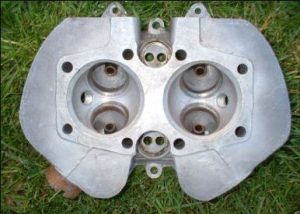
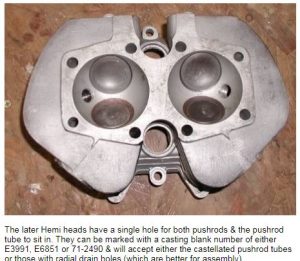
1958-66 500 Squish head used studs to retain manifolds. Had shallow combustion chamber with beveled edge near the head gasket surface.
1967-74 500 Hemi head (69-74 head pictured) – 1967 and later inlet manifolds retained by 5/16 screws rather than 1/4 studs.
The pushrod tube O rings need only .030” “crush” that is the head should be about .030’ off the gasket before torquing the head bolts. Mix components or fit thicker or thinner head gaskets to get this amount. More crush warps the head and less gets leaks at the pushrod tube joints.
Triumph cylinder head highlights:
1956 first year alloy head, these are prone to cracking between the inner stud holes and valve seat. If the crack is small they will still work fine, valve seats are cast in so they cannot fall out. Just run it.
1959 Bonneville dual inlet splayed head. Early ones still had the TR6 casting bosses beside the T120 inlets.
1963 Unit construction 9 bolt head introduced
1966 Valve and inlet port size increased
1969 Deeper pushrod tube receiver hole in head with a slight chamfer to guide the top O ring into place.
1971 Changed rocker box gasket. Locating dowels for rocker box. The 1972 T120 head used bolt on inlet manifolds and had push in port exhaust pipes instead of screw in spigots.
1973 First T140 head, 10 stud and push in port exhaust pipes
1978 1/2 T140E (Environmental) parallel port head for Amal Mk. 2 carburetors, D model had threaded exhaust ports for pipe retaining nuts but 650 exhaust spigots will thread in
1982 T140ES exhaust spigots returned and parallel inlets for dual big carburetors.
1945-62 Pre-unit and early unit construction twins with cast iron cylinders and alloy head (The 500 alloy not addressed here)

- Lifter block has no oil feed to tappets and no O ring under the 1/8 inch thick flange.
- Pushrod tube has a guide plate internally for the pushrods. This must be aligned so as to not rub on the pushrods in use.
- Lower O ring is Triumph number 70-1496 3/16” thick rubber, upper O ring is PN 70-3547 3/16” thick.
- The cylinder head will have only 8 larger stud holes with no center head bolt
- Recesses in head for pushrod tube is very shallow, about 1/32”

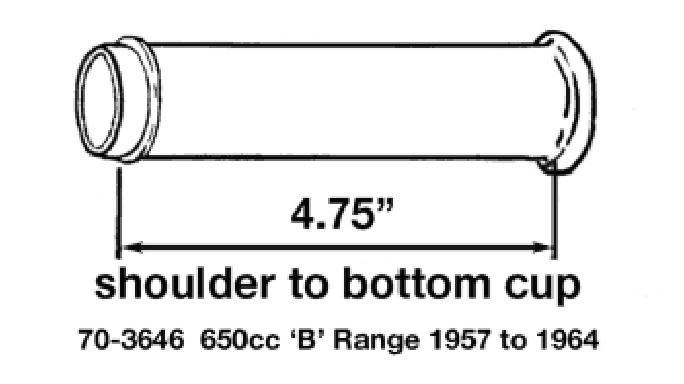
70-3646
1963-65 650 twins
1. Lifter block has no oil feed to tappets, no O ring under the 3/16 inch thick flange.
2. Pushrod tube has a guide plate internally for the pushrods. This must be aligned so as to not rub on the pushrods in use.
3. Upper O-ring is Triumph PN: 70-3547 and lower O ring is Triumph number 70-1496 3/16” thick rubber. Lower O ring retained by a cupped recess in the pushrod tube.
4. The cylinder head will have 8 larger stud holes with a smaller center head bolt. Recesses in head for pushrod tube is very shallow, about 1/32”
70-6000
1966 650 Twins
1. Lifter block has oil feed to tappets on exhaust only and has an O ring under the 3/16 inch thick flange. Using a non-oil feed cylinder on an oil feed case results in big leaks!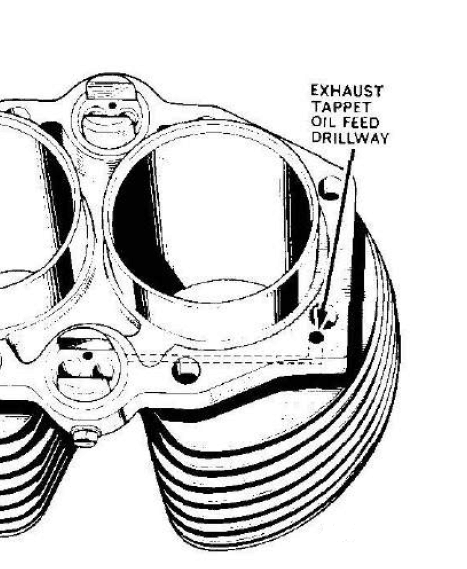
2. Pushrod tube has a guide plate internally for the pushrods. This must be aligned so as to not rub on the pushrods in use.
3. Upper and lower O ring is Triumph number 70-4752 1/8” thick clear rubber. Lower O ring retained by a cupped washer PN 70-4746
4. The cylinder head will have 8 larger stud holes with a smaller center head bolt.
Recesses in head for pushrod tube is very shallow, about 1/32”
5. 1966 only tappet has long recess for oil feed to the cam. This fits one year only although the drawings in the parts books show this for later bikes. The 1966 had a restrictor jet in the oil feed to the tappet block. Do not use these tappets in a motor without the restrictor (1967 on) as a dangerous drop in oil feed to the crankshaft will result. Oil hole faces out.
Click here for factory service bulletin detailing restrictor arrangements
1967/68 650 twins
1. Lifter block has oil feed to exhaust tappets and has O ring under the 3/16 inch thick flange.
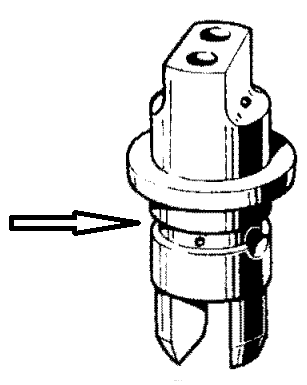
2. Pushrod tube has a guide plate internally for the pushrods. This must be aligned so as to not rub on the pushrods in use.
3. Upper and lower O ring is Triumph number 70-4752 1/8” thick clear rubber. Lower O ring retained by a cupped washer PN 70-4746
4. The cylinder head will have 8 larger stud holes with a smaller center head bolt.
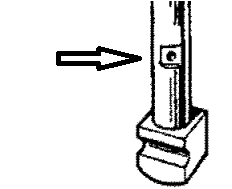 Recesses in head for pushrod tube is very shallow, about 1/32”
Recesses in head for pushrod tube is very shallow, about 1/32”
5. 1967 tappet became the “timed” tappet using a small recess to align with the oil fed in the tappet block for only a short time in its travel. These are safe to use with any tappet block. Oil hole faces out.
1969-73 650 twins
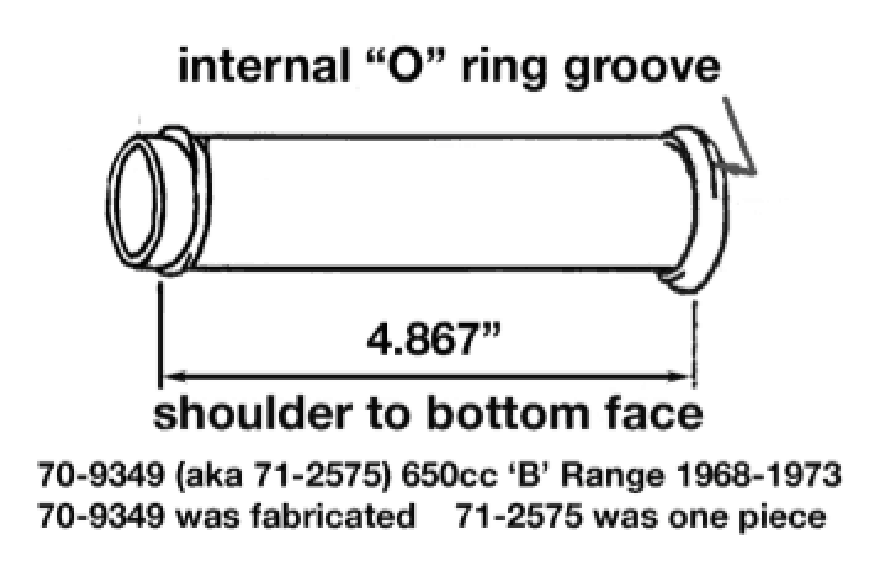
70-9349
1. Lifter block has oil feed to exhaust tappets and has O ring under the 3/16 inch thick flange.
2. Pushrod tube has no guide plate internally for the pushrods. This became part of the rocker box gasket.

3. Upper O ring is Triumph number 71-1283 Viton high temp. Lower O ring in a recess in the pushrod tube is PN 70-7310, seals against the new style lifter block. Under the pushrod tube is O ring PN 70-4752 and this is retained by the Triumph “Wedding band” PN 71-1707
4. The cylinder head will have 8 larger stud holes with a smaller center head bolt.

Recesses in head for pushrod tube is deeper about 1/8” +
5. Timed tappet using a small recess to align with the oil fed in the tappet block for only a short
time in its travel. These are safe to use with
any tappet block.
1974-79 750 twins
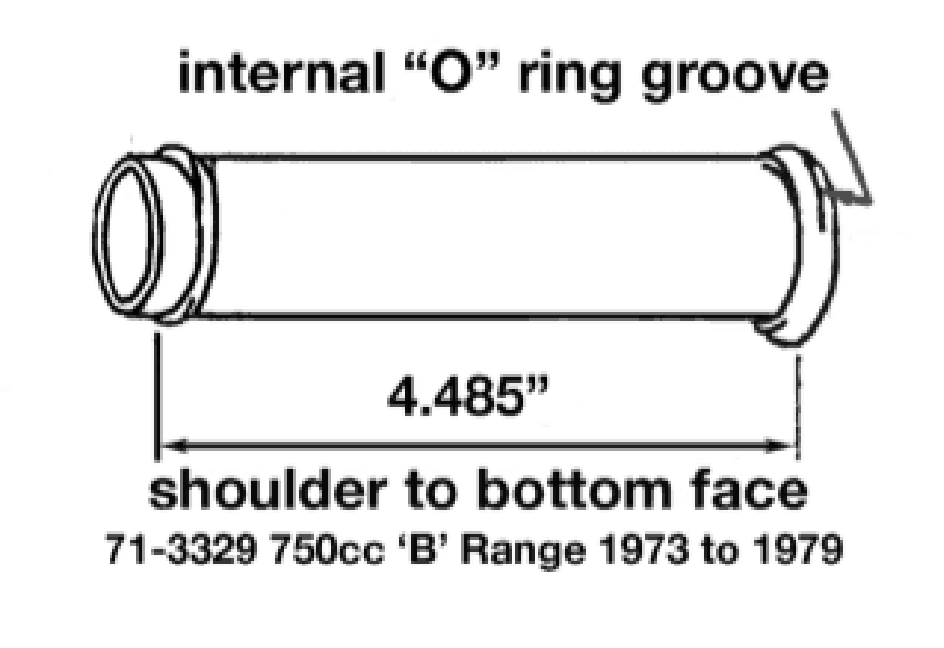
71-3329
1. Lifter block has oil feed to exhaust tappets and has O ring under the 3/16 inch thick flange. 
2. Pushrod tube has no guide plate internally for the pushrods. This became part of the rocker box gasket.
3. Upper O ring is Triumph number 71-1283 Viton high temp. Lower O ring in a recess in the pushrod tube is PN 70-7310, this seals against the new style lifter block. Under the pushrod tube is O ring PN 70-4752 and this is retained by the Triumph “Wedding band” PN 71-1707
4. The cylinder head will have 8 larger stud holes with 2 smaller center head studs. Recesses in head for pushrod tube deeper about 1/8” +
5. Timed tappet using a small recess to align with the oil fed in the tappet block for only a short
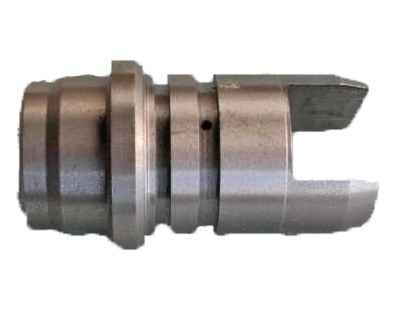
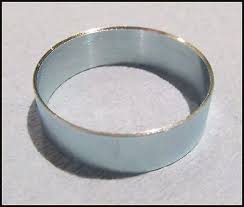 time in its travel. These are safe to use with any tappet block.
time in its travel. These are safe to use with any tappet block.
1980-82 750 Twins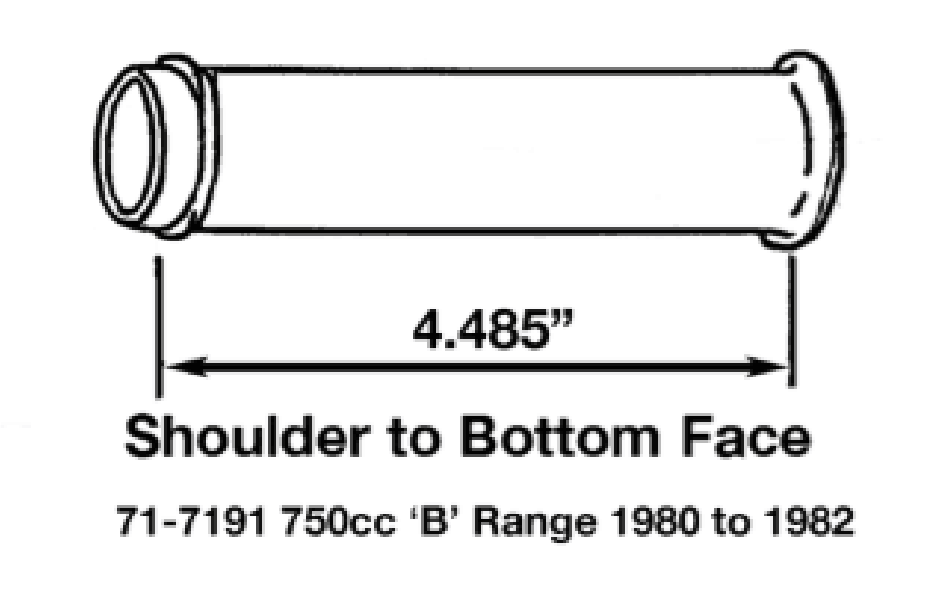
71-7191
1. Lifter block has oil feed to exhaust tappets and has O ring under the 3/16 inch thick flange. 
2. Pushrod guide part of the rocker box gasket.
3. Upper and lower O ring is Triumph number 71-1283 Viton high temp. Lower O ring in a recess in the pushrod tube is PN 70-7310, this seals against the new style lifter block and is retained by the Triumph “Wedding band” PN 71-1707
4. The cylinder head will have 8 larger stud holes with 2 smaller center head studs.
Recesses in head for pushrod tube deeper about 1/8” +
5. Timed tappet using a small recess to align with the oil fed in the tappet block for only a short time in its travel. These are safe to use with any tappet block.
6. 1982 cylinder head has threaded exhaust ports for exhaust stubs like the 650 up to 1971.
To sum up:
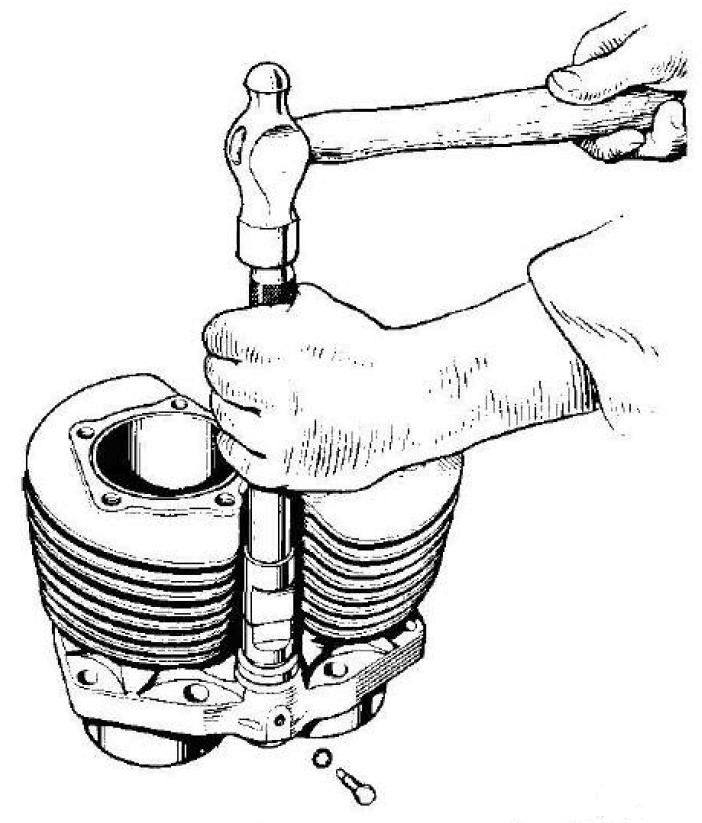
- You can mix and match 1956-1968 650 lifter blocks with a cylinder head that has the shallow recess for the upper O ring, 1968 and earlier. Beware however as 500 1957-68 lifter blocks look the same but have a smaller OD on the flange. Oil feed is on exhaust only however you can use exhaust lifter block on the inlet with no problem. Use the correct tube for the lifter block flange thickness, see text for year applications.
- You can mix 1969-72 lifter blocks and pushrod tubes with any 650 head with the deeper 1/8” recess. Some pushrod tubes have a castellated top while others have holes but all later type with captive O ring in base will interchange.
- T140 lifter blocks will fit 1969 650 0n. T140 pushrod tubes interchange 1973-78. 750 pushrod tubes are shorter than 650 tubes.
- 8 stud and 9 stud cylinders have different stud spacing so a 9 stud head will not bolt to a 8 stud cylinder. A 9 stud 650 top end complete will bolt to a pre-unit crankcase.
Use tool PN 61-6008 to remove and replace lifter blocks. Anything else will break a very costly part. 
Push-rod Tube Overview
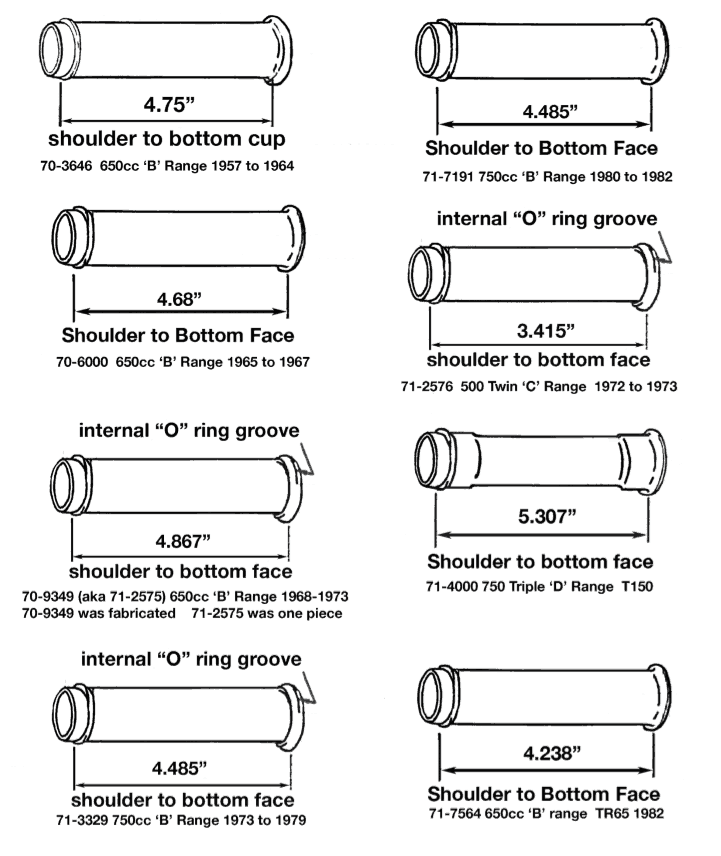
Tappet Block Overview
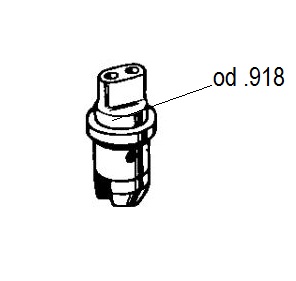
70-1477 Tappet block inlet/exhaust 1937-1965
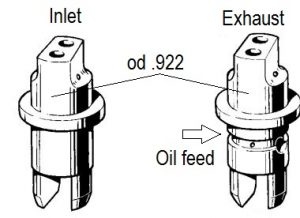
70-4676 Tappet block inlet 1966-68
70-5861 Tappet block exhaust 1966-68

70-9352 Tappet inlet block 1969-On
70-9352 Tappet exhaust block 1969-On
Triumph 350/500 Unit
The 350 and 500 Triumph models are a bit less complicated. Cylinder heads can easily be swapped to different years. All that is required it changing the pushrod tube and seals to match for the proper seal crush. There are only 2 part numbers for tappets as the smaller displacement twins never had oiled exhaust tappets. Triumph number 70-3753 is standard radius and 70-4040 is the radius type.
1959-63 350-500 Twins
- Lifter block has no oil feed to tappets and no O ring under the 1/4 inch thick flange.
- Pushrod tube has no guide plate internally for the pushrods. This was part of the rocker box gasket
- Lower O ring is Triumph number 70-3758 3/8” wide thin wall rubber, upper O ring is PN 70-3547 3/16” thick.
- Recesses in head for pushrod tube is very shallow, about 1/32”
- Tappet block number 70-3736 inlet and exhaust
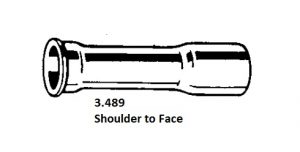
1964-69 350-500 Twins
- Lifter block has no oil feed to tappets and no O ring under the 1/4 inch thick flange.
- Pushrod tube has no guide plate internally for the pushrods. This was part of the rocker box gasket
- Upper and Lower O ring is Triumph number 70-4752 1/8” thick rubber.
- Bottom of tube uses part number 70-4746 sheet metal seal cup.
- Tappet block number 70-4676 inlet and exhaust
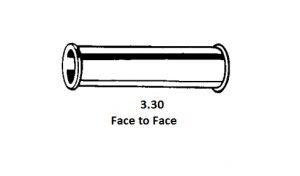
1969-74 500 Twins
- Lifter block has no oil feed to exhaust tappets but does have an O ring under the 3/16 inch thick flange.
- Pushrod tube has no guide plate internally for the pushrods. This was part of the rocker box gasket
- Upper O ring is Triumph number 71-1283 Viton high temp. Lower O ring in a recess in the pushrod tube is PN 70-7310, seals against the new style lifter block. Under the pushrod tube is O ring PN 70-3547 and this is retained by the Triumph “Wedding band” PN 71-1707
- Recesses in head for pushrod tube is deeper about 1/8” +
- Uses tappet block 70-9352 inlet and exhaust
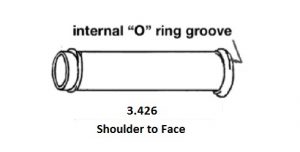
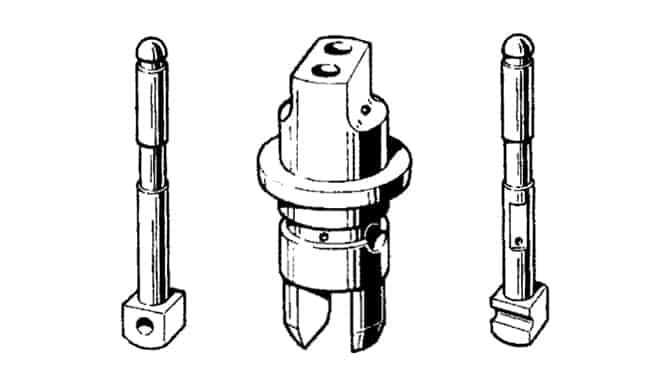

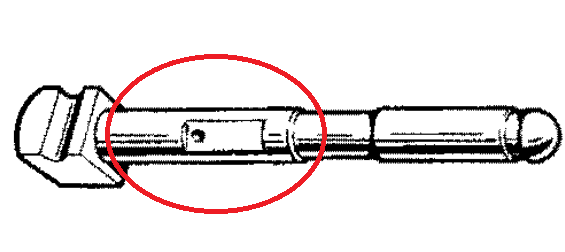
2 thoughts on “Understanding Triumph Tappet Blocks and Pushrod Tubes”
Fred
December 17, 2019 at 11:01 am
Very good bit of info
Alan
February 1, 2021 at 2:55 pm
Very helpful information. thank you
Comments are closed.